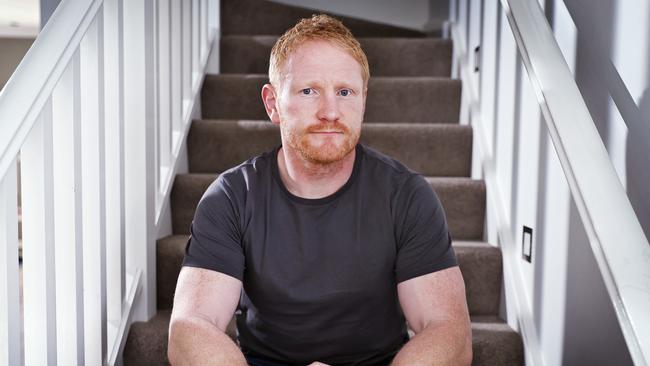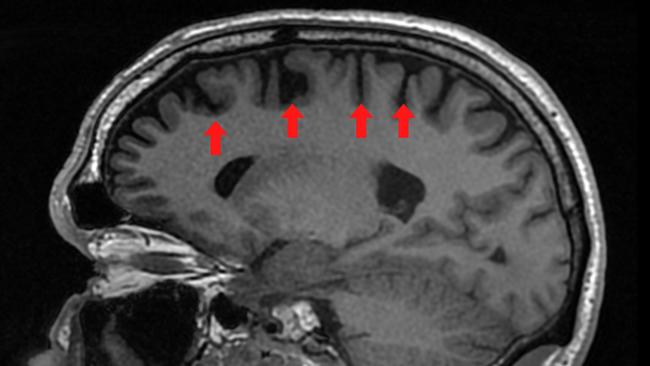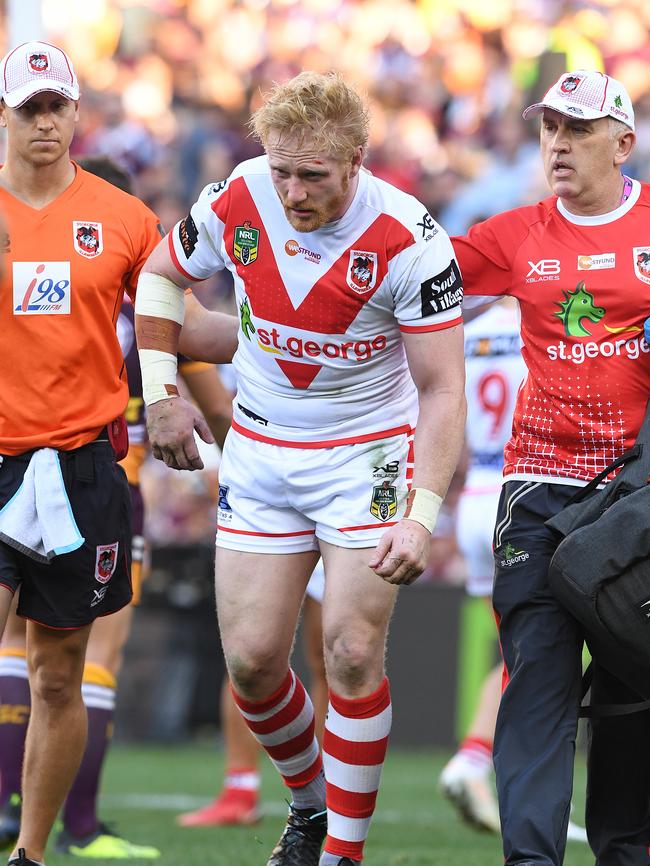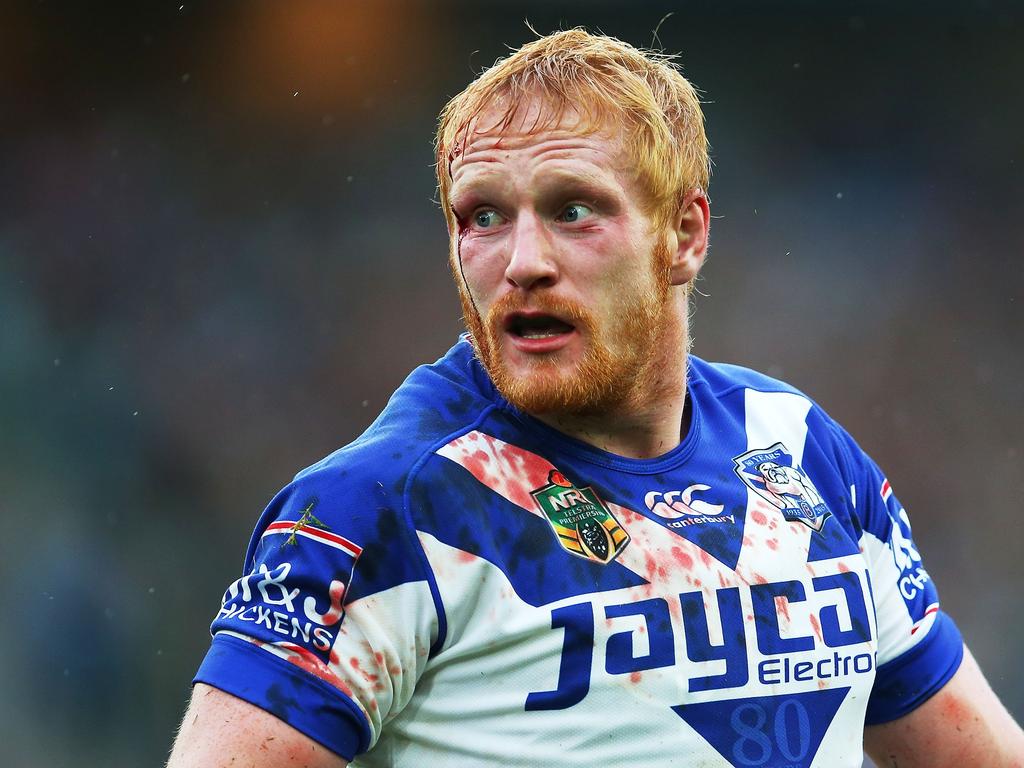Head Noise: James Graham reveals that rugby league ‘literally shrank my brain’
In the final episode of the Head Noise podcast investigation, NRL great James Graham reveals his ‘concerning’ brain diagnosis and lobbies for changes to the game.

After 18,000 collisions and 100 concussions in a lifetime of playing rugby league, former England Test captain and NRL great James Graham sits in a neurologist’s office and takes the toughest blow of all.
An MRI scan appears on a screen and delivers the news in black and white: his brain is damaged. His doctor, Rowena Mobbs, tells him his frontal lobe and parietal lobe show evidence of shrinkage for a man his age. The scan picks up white lesions on his brain which show “head trauma’’.
Dr Mobbs describes the scan as a “mixed result’’. “There are some changes I’d like to watch,’’ she says, adding that there is no clear answer at this stage.
“You may be fine. This may be fine lifelong. I certainly hope so.’’
Graham poses a question: “If, say, I was still playing, just hypothetically … what would your recommendation be?”
“To stop playing,’’ Dr Mobbs says to him.
Graham tells The Weekend Australian he tried to be calm as he received the news. “As I sat in the rooms, as Dr Mobbs relayed the state of my brain to me, my internal dialogue was not to be reckless in my actions after receiving this news,” he says. “I know the type of personality I am but I made a rule to myself not to self-destruct.”
Graham is a rarity. While many sportsmen have looked away from the after-effects of a life of body contact, he has chosen to confront it head on … literally.
He tells episode six of the Head Noise podcast that he will not let his life run off the rails. “As part of making this podcast, I’ve been looking back at the person I used to be, I see someone who was pushing away help, who was refusing to be vulnerable,” he says.
He also wants to see change in the way current players are treated and how concussions are handled.
He is pushing for contact to be limited in training in the NRL, as America’s NFL has already done.
Since 2011, the NFL has limited full-contact padded practices to 14 each year, which equates to just one per week during the regular season.
Graham has also been pushing for a brain, body and mind check-up for ex-players to help with their health post-career. Currently, there is nothing in place for former NRL players.
Along with The Weekend Australian, Graham has approached the NRL hierarchy, chief executive Andrew Abdo and ARC chair Peter V’landys about the proposal. They are considering it.

Graham, 36, has no regrets about the way he played the game over a 17-year career, but he does think he can use his experience
“Like I said, I am pretty determined to not let this (diagnosis) put me on a path to self-destruction. Instead, I am going to focus on making a difference in this space and I made this podcast investigation with The Australian with the aim of finding solutions,” he writes in Saturday’s column.
To take the pressure off the players, Graham thinks it is worthwhile for the NRL to “explore, discuss and consider” a mandatory stand-down period for concussion, similar to what they have in the UK’s Super League.
NRL protocols advise a minimum one-game stand-down – not mandatory – and an independent doctor can clear a player to play the following weekend.
“I know as a player I felt the pressure to return as quickly as possible to my team,” Graham said. “Perhaps we need to take that off the current crop of players. I think the game’s powerbrokers can do more and take the onus off the footballers.
“I also think the game’s hierarchies need to engage with companies who can provide cutting-edge technology to gauge concussions. This would take the subjectivity away and provide clear-cut concussion diagnosis of athletes. I can’t change the past but I can make things better for the future,” he added.

In the sixth and final episode of The Australian’s podcast investigation, Head Noise, Graham says he thought he may have paid a price for the way he played.
“And in my neurologist’s rooms, that was proven to be true,” Graham says. “While the neuropsychological tests I passed quite well … it has been confirmed via an MRI scan that part of my 36-year-old brain is damaged, that is ‘down on volume’ at the front and side part of my brain.
“As my neurologist, Dr Rowena Mobbs, explained, my frontal lobe (the front) and the parietal (the side part behind the frontal lobe) were all down on volume for a man my age. ‘Mildly so,’ Dr Mobbs tells me, but enough to say it’s ‘significant’.
“There was also an irregularity in the middle area of my brain – what is called the white matter. White spots are showing up, particularly on the left side.
The white matter part of the brain is for transmission, it’s like a freeway. These ‘white spots’, or lesions, indicate tiny areas of signal change – migraines can cause these but so can ‘head trauma’.”








To join the conversation, please log in. Don't have an account? Register
Join the conversation, you are commenting as Logout